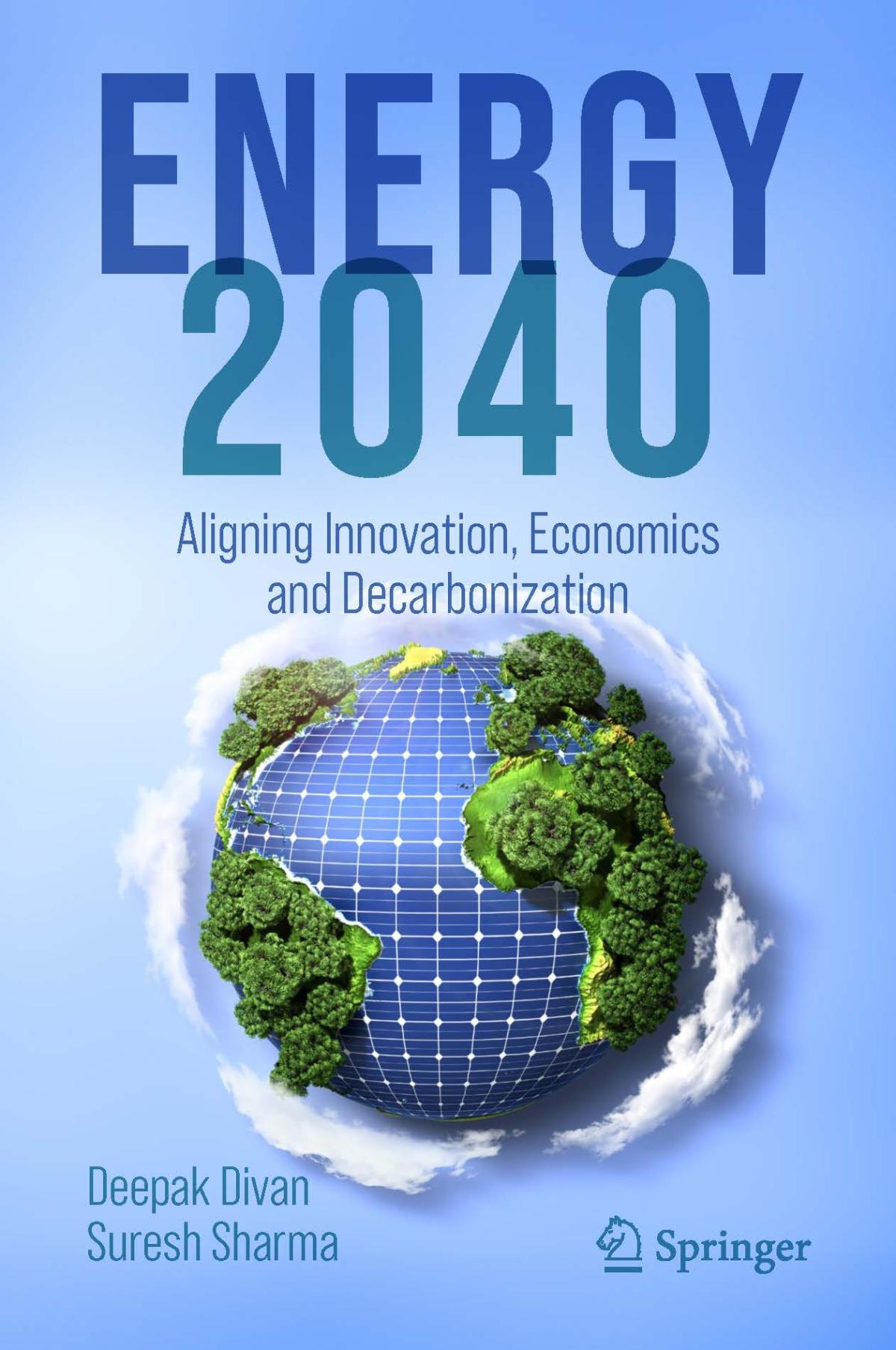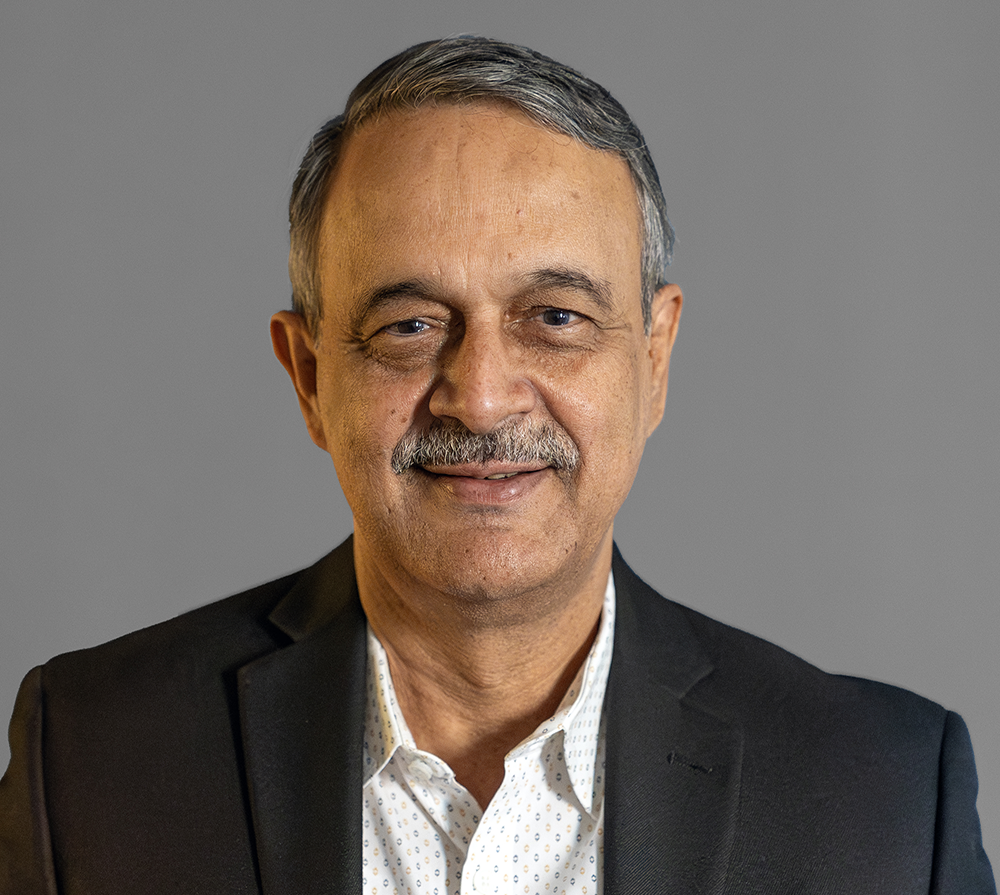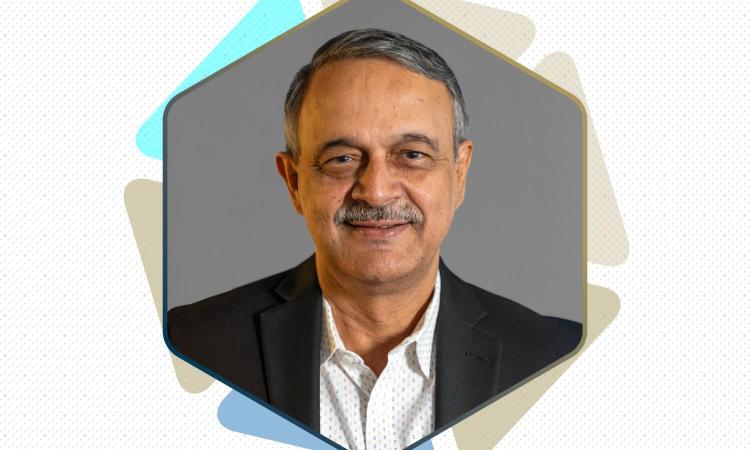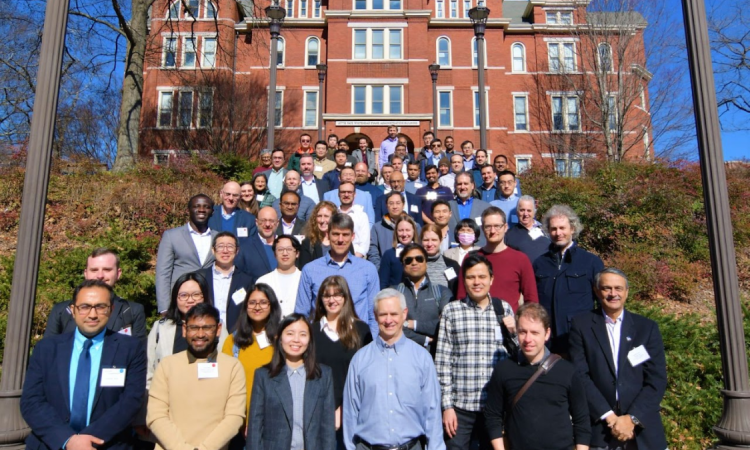The motivation for the book stemmed from a desire to unravel the complexities that often hinder innovation, particularly in the energy sector. We want to bridge the gap between siloed approaches and offer a comprehensive understanding of the evolving energy landscape.
Suresh Sharma
Deepakraj Divan and Suresh Sharma, experts in energy technologies and entrepreneurship, shed light on the challenges and opportunities in bringing disruptive technologies to market in their new book “ENERGY 2040: Aligning Innovation, Economics and Decarbonization”.
In an insightful interview, Divan, a Georgia Research Alliance Eminent Scholar and director of the Center for Distributed Energy (CDE) in the School of Electrical and Computer Engineering, and Sharma, an entrepreneur in residence at CDE, trace the historical roots of the current energy landscape, highlighting missed opportunities and gaps in understanding, and emphasizing the energy transition as a paradigm shift to offer insights into how to navigate it effectively.
How did the book and writing partnership come about? Who’s the book for?
Deepak Divan (DD): The book process started over two years ago during the COVID pandemic, when we had the time to reflect about the underlying causes of the energy transition, and the challenges posed in meeting decarbonization and economic goals simultaneously. The issues were not purely science and technology based, but involved economics, entrepreneurship, policy and geopolitics. We felt compelled to look deeper into understanding the underlying factors shaping our energy landscape, beyond mere technological advancements.

"ENERGY 2040: Aligning Innovation, Economics and Decarbonization" was published by Springer in April 2024.
Our collaboration was born out of a shared vision to understand the challenges posed by the energy transition, and to look at the issues holistically, including a variety of factors such as technology, innovation, entrepreneurship, economics, and policy.
Suresh Sharma (SS): The motivation for the book stemmed from a desire to unravel the complexities that often hinder innovation, particularly in the energy sector. We want to bridge the gap between siloed approaches and offer a comprehensive understanding of the evolving energy landscape.
DD: While the subject matter may go into technical intricacies of the energy infrastructure, including the power grid, our aim was to make it accessible to anyone with a basic understanding of science and technology. We wanted to foster cross-disciplinary dialogue and encourage readers to connect the dots across various domains.
Talk about the fundamental questions and challenges within the current energy innovation landscape that prompted the writing of the book?
DD: The fundamental question we have tried to address is: how did so many large industry sectors (oil and gas, electric utilities, automotive manufacturers, major global energy organizations, global consultants) miss the energy transition completely? In 2010, no one was thinking that PV solar, batteries or EVs would be real anytime soon. Yet, by 2015, they were all responding in emergency mode to a global tsunami of change. How could they miss the mark by so much?
Understanding this question at a deep level takes us on a journey of science, technology, innovation, economics, entrepreneurship, and policy.
The story starts at the historical level, explaining why we are where we are, and goes on to show the gaps in our thinking, explaining why the major miss occurred. It also shows why the energy transition represents a paradigm change and how to think about it as we move forward.
This in turn takes us into the world of innovation and the gaps in its translation — helping to raise the flag on what the university’s role in research could, and needs to be, and what impact it could have. The book ends by indicating the actions needed, and what the impact could be.
SS: We recognize the urgency of transitioning to cleaner, more sustainable energy systems. However, achieving this goal requires more than just technological innovation; it demands a nuanced understanding of policy frameworks, economic incentives, and societal dynamics. We hope the book can start a new conversation, offering pragmatic solutions that effectively integrate academia, industry, and policy for impactful progress.

Deepkraj (Deepak) Divan is a Georgia Research Alliance Eminent Scholar and director of the Center for Distributed Energy in ECE.

Suresh Sharma is an entrepreneur in residence at the Center for Distributed Energy (CDE) at Georgia Tech.
Why did industry miss the energy transition, as you say?
DD: Industries' inability to foresee energy innovations is highlighted by the significant transformations witnessed over the past two decades. During this time, technological advancements, changing consumer demands, and growing environmental concerns have reshaped the energy sector profoundly.
Like most problems of this size there are many factors for failure. It’s a combination of history, resistance to change, short-term profit motives, lack of vision, regulatory and policy barriers, over-reliance on traditional models, and insufficient collaboration.
As the costs of renewable energy decline and disruptive technologies continue to redefine traditional business models, the importance of embracing innovation and anticipating change cannot be overstated.
The book brings up the concept of "de-risking" technologies and its significance in the process of technology transfer and commercialization, especially for disruptive deep-tech to market opportunities? Can you elaborate on that?
DD: Absolutely. "De-risking" plays a crucial role in minimizing the uncertainties and challenges associated with bringing new and disruptive technologies to market. It involves systematically addressing potential risks at various stages of the innovation process, from initial research and development to market deployment. By conducting thorough feasibility studies, prototyping, and market validation exercises at a very early stage in the process , we can identify and mitigate technical, financial, and regulatory risks that may impede the commercialization of innovative technologies.
SS: It can help build investor confidence and attract capital by demonstrating the viability and potential of the technology. By de-risking technologies early on, we increase their attractiveness to investors and stakeholders, thereby accelerating the pathway to commercialization. This proactive approach not only enhances the chances of success for startups and ventures but also fosters a more resilient and dynamic innovation ecosystem.
You also look at obstacles facing academic research that impact technology transfer and market adoption. What are these obstacles?
DD: The journey from research innovation to market adoption, especially for deep-tech, is fraught with challenges at every turn. One major obstacle is the disconnect between academic research and industry needs. Often, research endeavors focus on theoretical advancements without considering practical applications, market viability, and/or the adoption and scaling process. This results in a gap between technological breakthroughs and real-world solutions.
Additionally, the traditional funding models and bureaucratic processes within universities can hinder the rapid translation of deep-domain research into commercial products. Researchers may face barriers in securing funding for translational efforts or navigating intellectual property rights, further delaying technology transfer.
(text and background only visible when logged in)
The year 2040 serves as a symbolic milestone, signifying a time by which we need critical technologies to be available at scale to help meet our 2050 goals of zero carbon emissions. Given the period of dramatic change in the energy landscape that we have seen over the period 2000-2020, this now seems doable.
SS: Beyond academia, startups and entrepreneurs encounter their own set of challenges in navigating the complexities of commercialization. Limited access to capital, regulatory hurdles, and market uncertainties can impede the scalability and adoption of innovative technologies. Furthermore, the risk-averse nature of investors often discourages investment in early-stage ventures, prolonging the time-to-market for groundbreaking innovations.
What about the backlog of research licenses in academia waiting to hit the market? Is this a significant issue?
SS: It's a pressing concern. Before the Cold War ended in the early '90s, the landscape of innovation was different. Industrial R&D centers were vibrant, receiving federal funds to drive innovation aligned with national goals. However, as the Cold War era concluded, these centers gradually diminished due to a lack of substantial federal funding, which hindered their ability to independently finance research and development.
Consequently, university research flourished, resulting in an accumulation of patents, leading to what we describe as an "innovation logjam." The challenge lies in commercializing these patents efficiently. This is where big research centers like the Center for Distributed Energy (CDE) come into play, offering a pathway to navigate through this logjam and accelerate technology transfer to the market.
DD: Absolutely. The backlog of research licenses waiting to be commercialized is a symptom of the changing dynamics in the innovation ecosystem. With traditional industrial R&D centers dwindling and universities amassing patents, there's a critical need to bridge the gap between research and commercialization.
The CDE model presents a solution-oriented approach, emphasizing not just technological advancements but also strategies to expedite their transition into practical applications. This ensures that groundbreaking innovations don't languish on the shelves but rather contribute to real-world solutions efficiently and effectively.
Can you tell us more about the CDE model and how it could serve as a model to follow?
SS: CDE's model is built on collaboration, multidisciplinary research, and industry engagement. We have created an environment where researchers, industry partners, and entrepreneurs can work together under one roof to tackle complex energy challenges. By bringing together diverse perspectives and expertise, we are able to accelerate the development and commercialization of cutting-edge technologies.
DD: Our financial model at CDE is designed to ensure long-term sustainability and independence. By retaining a portion of royalty payments from commercialized technologies, we create a perpetual funding source for ongoing research and development efforts. This financial autonomy allows us to continue pursuing high-risk, high-reward projects without relying on external funding sources. It also incentivizes researchers to focus on impactful innovations with commercial potential, aligning academic research with real-world needs. It is important to emphasize that while CDE has been focused on the energy transition, the lessons we have learned regarding processes for translation of deep-tech to impact, are applicable across many fast- evolving technologies and disciplines. The book also raises the question of what is the role of university research as we look forward at an explosion of knowledge and disruptive new technologies across virtually every discipline.
The book is always looking toward the future, even its title, “Energy 2040”. Let’s end on talking about the significance of the title.
DD: The year 2040 serves as a symbolic milestone, signifying a time by which we need critical technologies to be available at scale to help meet our 2050 goals of zero carbon emissions. Given the period of dramatic change in the energy landscape that we have seen over the period 2000-2020, this now seems doable. The book unpacks the technologies and steps needed to achieve this critical societal goal – by aligning innovation, economics and decarbonization.
SS: Indeed. The goal is to inspire actionable change and facilitate collaboration among academia, industry, and policymakers to ensure that innovative energy solutions are effectively integrated into the global energy landscape by 2040.
UPCOMING RELATED EVENTS
- May 2 | 11 a.m.
Debate on "Global Energy Transition and Energy Access" by Dr. Frede Blaabjerg and Dr. Deepak Divan at Massachusetts Institute of Technology, moderated by Dr. Samantha Coday. This event is organized by IEEE Power Electronics Society (PELS) Boston Chapter and IEEE Power Electronics Society Technical Committee TC-12 Off-grid solutions and energy access. Learn more.
- May 3 | 9 a.m.
The 2024 IEEE Vision, Innovation, and Challenges Summit (IEEE VIC Summit) & Honors Ceremony. Dr. Divan to receive the 2024 IEEE Power Engineering Medal. Learn more.
Related Content
Divan Selected as IEEE Medal in Power Engineering Recipient
The globally recognized researcher in advanced power conversion technologies is the first Georgia Tech faculty member to receive the distinction.
Looking Back to Prepare for the Future of the Power Grid
An interdisciplinary research team is hoping to shape the future of electric power grids by studying and cataloguing the field’s robust history.
(text and background only visible when logged in)

